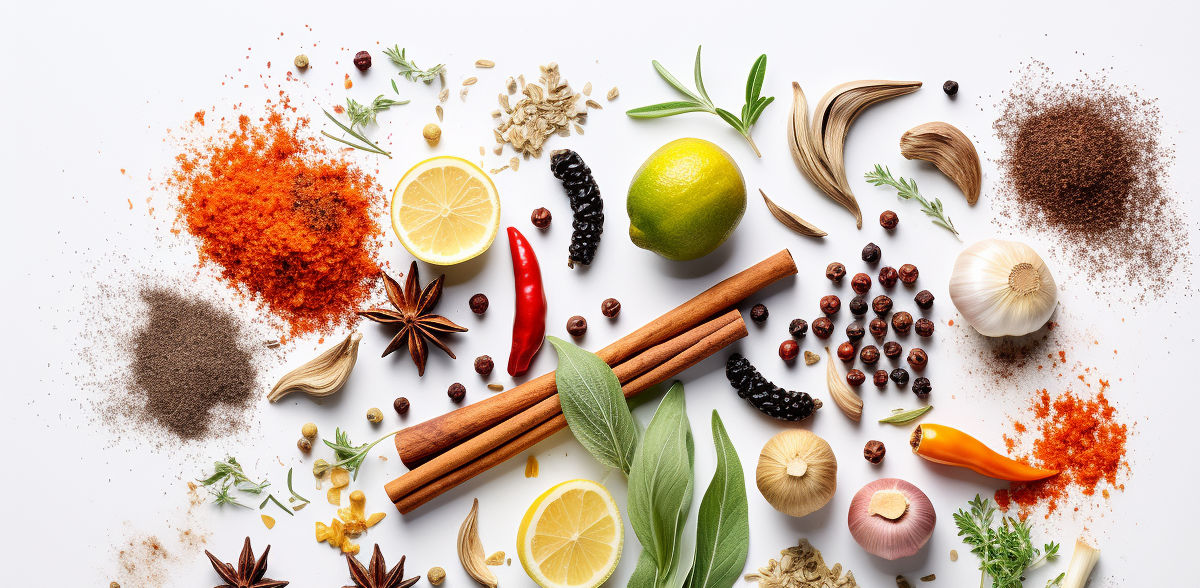Herbs and spices tout taste and health as saturated fat, salt replacements
In response to the low-fat craze of the 1990s, many food companies removed saturated fats from their products, only to replace them with sugars to maintain their palatability. Unfortunately, the resulting products were no healthier than the originals, and the average person today still consumes too much saturated fat. Now, a team of Penn State researchers has figured out how to remove some saturated fat, sugar and salt from popular American foods while maintaining their tastiness. The trick? Replacing these overconsumed nutrients with a dose of healthy herbs and spices.
“Cardiovascular disease is the leading cause of death globally, and limiting saturated fat and sodium intake are key recommendations for reducing the risk of developing this disease,” said Kristina Petersen, associate professor of nutritional sciences, Penn State. “Yet, we know that one of the key barriers to reducing intake of these ingredients is the flavor of the food. If you want people to eat healthy food, it has to taste good. That’s why our finding that participants actually preferred some of the recipes in which much of the saturated fat and salt was replaced with herbs and spices is so important.”
The results appeared in a recent issue of the Journal of the Academy of Nutrition and Dietetics.
The team used a nationally representative database from the Centers for Disease Control and Prevention, called the National Health and Nutrition Examination Survey, to identify 10 of the most popular foods that are typically high in sodium, added sugars and saturated fat. These included meatloaf, chicken pot pie, macaroni and cheese, and brownies.
Next, they worked with culinary experts to develop three versions of these recipes. The first contained typical amounts of saturated fat, sugar and salt used in these recipes. The second version was nutritionally improved by removing the excess saturated fat, sugar and salt. The third version had the same nutrient profile as the second version, but also contained added herbs and spices, such as garlic powder, ground mustard seed, cayenne, cumin, rosemary, thyme, cinnamon and vanilla extract.
For example, the typical macaroni and cheese recipe included salted butter, 2% milk, American cheese and salt. For the nutritionally improved version, the researchers swapped the salted butter for unsalted butter and reduced the amount in the recipe by 75%. They swapped the 2% milk for skim milk, replaced some of the American cheese with reduced fat cheese and eliminated the extra salt. For the nutritionally improved version with herbs and spices, the researchers added onion powder, garlic powder, ground mustard seed, paprika and cayenne.
“Our goal was to see how much we could lower these overconsumed ingredients without affecting the overall properties of the food in terms of mouthfeel and structure, and then add in herbs and spices to improve the flavor,” Petersen said.
Next, the researchers conducted blind taste tests featuring each of the 10 recipes. Participants evaluated all three versions of a dish, one at a time, in a single session. Between 85 and 107 consumers completed each test. Participants rated several aspects of acceptability for each recipe, including overall liking and attribute liking, such as the food’s appearance, flavor and texture. Participants then ranked the dishes in order of preference.
“We found that adding herbs and spices restored the overall liking to the level of the original food in seven of the 10 recipes,” Petersen said. “In fact, participants actually liked some of the recipes better than the originals.”
Specifically, participants liked the healthier, flavor-enhanced versions of the brownies and chicken in cream sauce significantly more than the original recipes. For five of the dishes — meatloaf, chili, apple pie, pasta with meat sauce and taco meat — participants liked the healthier, flavor-enhanced versions about the same as the original versions. They liked the healthier, flavor-enhanced cheese pizza, mac and cheese, and chicken pot pie recipes less than the original versions.
Finally, the team modeled the potential impact of 25% to 100% of U.S. adult consumers eating these recipes instead of the original recipes. For both saturated fat and salt, they found that the estimated daily reduction would be about 3% if 25% of consumers adopted the healthier recipes versus about 11.5% if 100% of consumers adopted the healthier recipes. Smaller estimated reductions in added sugars were observed across the modeled range of consumer adoption.
“We demonstrated a meaningful reduction in overconsumed nutrients is possible with modification of these 10 recipes, and these changes are acceptable to consumers,” Petersen said. “This suggests that more research should be done to look at how to implement this more broadly, how to educate people to make these kinds of changes. Importantly, these findings could be applied to the food supply because most foods that people consume are purchased in a prepared form. I think that would have a profound impact on people’s health.”






























































